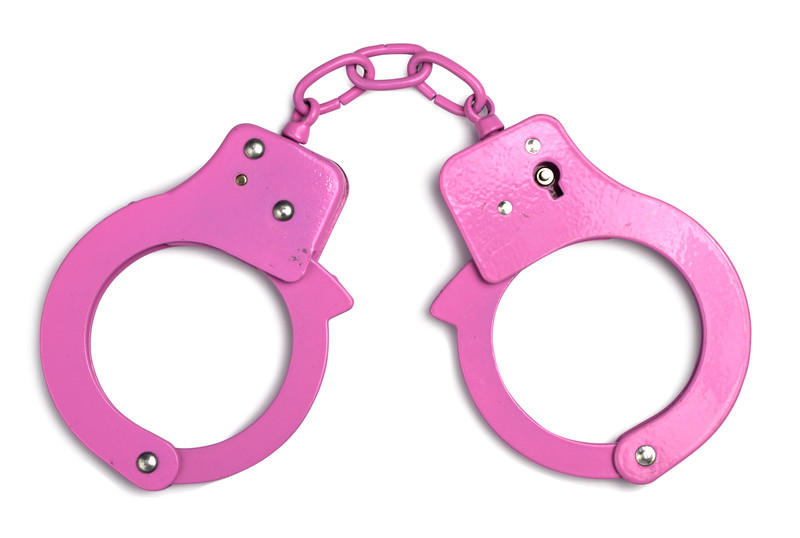
Guilt, is part of being human. We all suffer from it from time to time and that’s OK. What is not OK is when we imprison ourselves, get stuck or essentially handcuff ourselves to patterns of thinking, behaving or beliefs, because we are trapped by what I call ” Toxic Guilt”. Toxic guilt stays inside us, like a poison, eating away at us. It shows up in thoughts, that are destructive, like feeling unworthy or not deserving, in behaviors like over eating, drinking, working, blaming, shaming and so on. It keeps us in the past, it keep us from making choices for the present moment based on what happened in the past. It destroys our ability to be in the present. It keeps us in situations, such as bad marriages, unfulfilling relationships,unhealthy work environments and so much more. As some folks would say ” it sucks”!
There is a place for guilt! I call that Good Guilt! Good Guilt keeps us following rules, like stopping at traffic lights and paying taxes. It keeps us being polite, it helps to do the right thing, like showing compassion for others even if inconvenient, it may even get us into the dentist and annual checkups and many of the other myriad of things that we must do to keep life moving along in an orderly, healthy, civilized and compassionate fashion. So I am not talking here about busting Good Guilt.
I am talking about when guilt crosses over to become toxic. This is a big subject, but for me, the two most important aspects of Toxic guilt are: 1.Toxic guilt makes you feel responsible when you are not. Like feeling responsible for someone else’s happiness, feeling like something has to be perfect, compromising your own well being for someone else’s that kind of things. 2.The other main way that toxic guilt shows up, is it twists the truth and makes us lose sight of the reality of the situation. These two concepts work together. By feeling overly responsible we are warping the truth of a situation and changing the reality. This leads us to think something was our fault and feeling guilty when it is not accurate. This is beautifully described in Truly Madly Guilty by Liane Moriarty. Spoiler Alert!!!! The story depicts, three families at a backyard barbecue, a near tragic incident occurs, and all of the characters, believe that they are responsible, at fault for the incident, they feel responsible for something that was not their responsibility and they twist the facts of what happened to make reality agree with their own guilty version of the incident. It is an amazingly brilliant description of how Toxic Guilt works.
The origins of guilt are complex, from family belief systems, genetics, gender, cultural belief, religious back grounds and so on. The really great news, is we get to choose, what we believe which frees us to make new choices based on the present instead of reacting based on our past!
The 5 Steps to Guilt Busting are:
- CONFESS or TELL a trusted person, whether spouse, friend, family member, clergy person or professional ( Life Coach for example), your story. I use the word confess because it is in the unlocking of the story and the telling of it that the freedom from its handcuffs begins. There is immediate relief, a lightening of the load of the burden as we let it out. It frees the heart, mind, and body of the energy of keeping it inside. I see clients whole bodies, faces and eyes change once their story is out!
- FACT CHECKING In the telling of the story, a ” fact check” occurs. This is super important because it will reveal, for example, who or what else was involved ( keeping you from feeling over-responsible and check for the truth making sure that reality is not twisted).
- OBSERVATION Once the story is told, and the facts checked, the third step is to observe with an objective and compassionate eye. Look for what actually happened, who was involved, where were others responsible, was there a constellation of events. An honest look, not one driven by toxic guilt!
- Learn. This process allows you to learn from the past instead of beating yourself up and imprisoning your self. Like when babies are learning to walk, they observe what bumps make them fall down, I don’t think they judge themselves or feel guilty for falling they observe and adjust. So, by understanding, your take aways from a past situation, you can get an accurate understanding of what was your part of a situation, what wasn’t your part, and make decisions or choices about how to show up the next time something similar happens.
- Choose. Now the really great part starts. Free from the chains of feeling overly responsible and twisting the truth to change reality, we get to choose a new way of thinking feeling and believing, it is called freedom. So, by understanding, your take aways from a past situation, you can get an accurate understanding of what was your part of a situation, what wasn’t your part, and make decisions or choices about how to show up the next time something similar happens.
Let’s see how this works. I have a client named Jeffrey, a handsome 47 year old lawyer from Quebec. His wife, Sally was recently diagnosed with breast cancer. Jeffrey came to me for coaching to help him handle the diagnosis and the responsibilities as care taker. Jeffrey felt guilty about Sally’s breast cancer, he felt like it was his responsibility. In session, we followed the Guilt Buster exercise.
Step 1. Confess or tell. Jeffrey told me that Sally had been putting off going for her annual check ups for three years, at first he didn’t think much of it, but after three years she finally went and that was when the lump was discovered and the diagnosis of cancer given. Jeffrey, feels like it is his fault that she did not go to the doctor, there fore it is his fault she has cancer.
Step 2. Fact check. After telling me his story, Jeffrey felt great relief, his face looked calmer and his body less rigid. Together, we went over the facts. We checked in right away to see whose responsibility it is to get to the doctor. We agreed it was Sally’s. We checked for truth twisting to see if Jeffrey was changing the facts to make his reality of being guilty seem more real. We found out that he believed he should have made her go to the doctor, once he acknowledged this he could let go of the guilt.
Step 3. Observation In a calmer state from telling his story, and having fact checked, Jeffrey was able to observe, that other circumstances were going on at the time, Sally, had been busy starting her own architectural firm, there was a doctor shortage in Quebec, Jeffrey had been promoted to VP of the University and their children were busy getting married and having children. So he was able to observe the surrounding circumstances and understand he was not the only player.
4. Learn. Once this was all out, Jeffrey could learn from the situation. He understood with a clear mind and heart what happened and what his role was as well as the role of the other factors.
5. Choose. Jeffrey was now free to choose how he wanted to show up for his wife and her breast cancer rather than reacting due to his hidden guilt.
As always, I hope this guide is helpful. It is dedicated to my clients from whom I have learned so much!
All the best,
Coach Susy


Susy Giddy is a Life Coach. One of her specialties is helping clients move through adversity and challenges as quickl and easily as possible. She can be reached at https://calendly.com/coachsusygiddy
